Information Lesson Plan

Lesson Plan Mindmap for Information – Click to Enlarge
CLICK ICONS TO JUMP DIRECTLY TO EACH SUBJECT ON THIS PAGE








INFORMATION LESSON PLAN
This page is a free-shared lesson plan archive for teaching all educational subjects within the context and theme of “Information”. It is purposed for use in community education environments, homeschool environments, traditional schooling environments, or as a supplemental and fun addition to any education program. As part of the complete Education for Life Program, this lesson plan is specifically designed to work in conjunction with the other components: Foundations of Teaching, Curriculum, Teaching Strategies, Learning Tools and Toys, Evaluation Model, and The Ultimate Classroom. If you’d like to learn how all these components work together, click here. Click here for the specifics focused on just using the lesson plans:
CLICK HERE FOR A DETAILED TUTORIAL ON HOW TO USE THIS LESSON PLAN
NOTE: The colors are provided as a possible linear progression (red/easiest to violet/most challenging) for people that might prefer a more linear structure. Our core philosophy, however, is that through creativity every color can be made easy or challenging for any learning level.
RELATED PAGES (mouse-over for descriptions and click for complete pages)
EDUCATION OVERVIEW | HOW TO USE THIS COMPONENT | OUR OPEN SOURCE PURPOSE
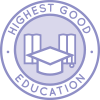
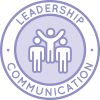
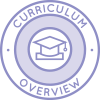
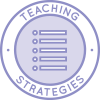
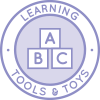
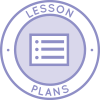
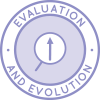
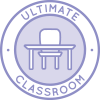
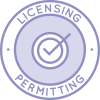

WAYS TO CONTRIBUTE TO EVOLVING THIS EDUCATION PROGRAM WITH US
SUGGESTIONS | CONSULTING | MEMBERSHIP | OTHER OPTIONS
A NOTE ABOUT ALL ONE COMMUNITY LESSON PLANS
The One Community lesson plans are intentionally designed for use in ANY educational environment and with ALL educational, cultural, religious/spiritual, and philosophical approaches to teaching and learning. They are designed without an ideological approach and specifically so they can be adapted to include the views, preferences, methodologies, and/or ideologies preferred by different parents and teachers.
For maximum flexibility and adaptation, they are also designed to be combined to teach multiple subjects at the same time. Doing this increases the creativity, effectiveness, and fun of your learning environment. Once we are on the property and operating our version of the complete school and Education for Life program, we will be adding video examples of how to combine the lessons. In the meantime, visit the Teaching Strategies page for a list of suggestions.
ARTS AND TRADES
CLICK HERE FOR THE COMPLETE SUBJECT OUTLINE FOR ARTS & TRADES
 | TEACHING ARTS AND TRADES WITHIN THE CONTEXT OF INFORMATION |

| The Arts- Draw a picture* showing some places where you can find information.
- Write lyrics* to an existing song to help you remember some information. An existing example is the Alphabet song, which helps us remember the order of the letters.
- In some cultures, different things, such as patterns on textiles, or body art, etc. tell the stories of either the culture of the people or of the individual person wearing them. Read about some of these patterns and symbols, and then make a pattern or symbol using modeling clay* based on a pattern or symbol that inspires you.
- In some cultures, sculptures contain information. For example, Indian mudras each have their own meaning. Do some research and choose a mudra or other meaningful symbol and create a sculpture* inspired by your research.
- Create a mixed-media painting* conveying information important to you (such as your stance on an animal or environmental issue).
- Research the information/meaning contained in different types of textiles or patterns in various cultures. Using embroidery, sewing, knitting, crocheting, or a combination of two or more of these, create your own artistic piece* inspired by something you find.
- Create a performance art piece* (dance, theatre, singing, instrument) which conveys a story or informative message you find important or inspirational.
|

| Trades- Make a sign* for an imaginary store, cafe/restaurant, or service, or for one you’d like to provide/run. Think about what information you would like to convey and how to best do it (text size, colors, background, etc.).
- Imagine you are a graphic designer and have been asked to produce a name card for someone. Design a name card* for someone who is either real or imaginary. Include any information that people who would want to contact them will need.
- Read about how beading has been used in different cultures to convey different information. Then create you own piece* of beading, using beads, buttons, or other similar objects, which will convey some information about you.
- Paper was, and still is, an important medium for humans in conveying information. Learn about different types of “paper” that were used in the past (such as papyrus) and make 3 pieces of paper*, each from a different source material (bamboo, blue jean pulp, etc.).
- In some cultures, textiles tell the stories of either the culture or the person wearing an item. Read about some of these patterns and then create your own piece of textile* by drawing or painting weaving, embroidery, etc. on a piece of cloth.
- Imagine you work for an advertising agency and have been approached by an organization of your choice to convey some information to the public. Design an ad* (using any type of medium you choose) that tells the information to a specific audience, in a way that is also branded to align with the core essence and values of the company.
- Choose a trade and research the best way to get helpful information across in that trade, such as information about endangered species or a social issue. Create a trade related piece* that conveys some information you are passionate about and open source your information.
|
| CLICK HERE TO EMAIL US IF YOU HAVE AN IDEA TO ADD TO THIS SECTION |
* Please note that anything with an asterisk is just a suggestion. The diversity of options with asterisks are interchangeable and purposed to stimulate your own ideas. Any one of these suggestions could be replaced with a written paper, any form of art project (drawing, painting, music, paper mache, clay, wood, knitting/embroidery, metals, etc. etc.), an experiment, a presentation, a mindmap, a computer program, a web design project, a piece of poetry or a song, an interpretive dance or play, a group project, or anything else. What we feel is most important is that both the Learner and the Teacher agree on an exercise/activity they both feel would be maximally engaging, fun, and effective. If you come up with an idea we haven’t already thought of, please share it with us.
ENGLISH
CLICK HERE FOR THE COMPLETE SUBJECT OUTLINE FOR ENGLISH
Note: Any language can be substituted for English. The subject is listed here as “English” because that is the primary language of most of the people on the team, and the official language of the country we’re building our initial location in.
 | TEACHING ENGLISH WITHIN THE CONTEXT OF INFORMATION |

| - Make an apology card* for someone you feel deserves it.
- Imagine you have to share some information, such as bad news, advice, or an apology. Do some research, and create and write down ten examples of sentences* used to communicate negative information in a sensitive way.
- Read a novel of your choice, and choose at least two characters to write short biographies for. Find all the information you will need in the novel, and then write biographies* for these characters.
- Write a technical document* about either conflict resolution, or what to do if someone you know is suffering from a mental health issue. Convey information logically and correctly, including scenarios, definitions, and examples to help readers understand the information.
- Media coverage is about more than just conveying information; it affects how we see the world. Choose a current event or issue, and write a 5+ page cited essay* comparing and contrasting the ways 5-10 media genres & sources have covered the event or issue of your choice. (e.g. alternative news, documentaries, mainstream newspapers. magazines, etc.)
- Not everyone is equally as good at communicating information to others. Learn how you can facilitate a communication process for those who are not as proficient in communication. Write an open source how-to document* on this topic.
- Communication is not only carried out via written and spoken forms. Learn some basic sign language (or increase your proficiency in sign language) and create a public event* focused on teaching others basic communication with sign language.
|
| CLICK HERE TO EMAIL US IF YOU HAVE AN IDEA TO ADD TO THIS SECTION |
* Please note that anything with an asterisk is just a suggestion. The diversity of options with asterisks are interchangeable and purposed to stimulate your own ideas. Any one of these suggestions could be replaced with a written paper, any form of art project (drawing, painting, music, paper mache, clay, wood, knitting/embroidery, metals, etc. etc.), an experiment, a presentation, a mindmap, a computer program, a web design project, a piece of poetry or a song, an interpretive dance or play, a group project, or anything else. What we feel is most important is that both the Learner and the Teacher agree on an exercise/activity they both feel would be maximally engaging, fun, and effective. If you come up with an idea we haven’t already thought of, please share it with us.
HEALTH
CLICK HERE FOR THE COMPLETE SUBJECT OUTLINE FOR HEALTH
 | TEACHING HEALTH WITHIN THE CONTEXT OF INFORMATION |

| - Not all information is communicated verbally. Find some examples of information conveyed non-verbally that tells you about someone’s emotional health. Discuss* what you learn with at least 3 other people.
- Find out your blood type, and see what other blood type others have, and find out why people would need to know this type of information. You could also do this with another type of health information. Write at least 3 sentences* about this.
- Different sports have different health requirements and restrictions (for example, bungee jumping vs walking). What health information do companies/teachers require from potential participants? In a table*, list the health information required for five sports and also compare and contrast a few sports and their health requirements – for example, people with heart conditions should not participate in surfing courses.
- Different online sources give different information about both how to stay healthy and how to recover from disease(s). Find a health issue or disease, and create a table* and 1 page conclusion paper* comparing and contrasting what different online sources say.
- Write a 3 page reflective piece* about how to balance intuition and information collection and analysis when making health-related decisions.
- There are many different diets (e.g. paleo, raw vegan and detox diets) and contrasting information about each one from different sources. Write a 5+ page cited essay* comparing and contrasting what different sources say about at least three different types of diet. Explain what information you think is more reliable and why.
- Write a 5+ page cited essay* about the information you need in order to interact well with and form relationships with people of other cultures, backgrounds, and beliefs, and how you would need to use such information. Open source publish your essay.
|
| CLICK HERE TO EMAIL US IF YOU HAVE AN IDEA TO ADD TO THIS SECTION |
* Please note that anything with an asterisk is just a suggestion. The diversity of options with asterisks are interchangeable and purposed to stimulate your own ideas. Any one of these suggestions could be replaced with a written paper, any form of art project (drawing, painting, music, paper mache, clay, wood, knitting/embroidery, metals, etc. etc.), an experiment, a presentation, a mindmap, a computer program, a web design project, a piece of poetry or a song, an interpretive dance or play, a group project, or anything else. What we feel is most important is that both the Learner and the Teacher agree on an exercise/activity they both feel would be maximally engaging, fun, and effective. If you come up with an idea we haven’t already thought of, please share it with us.
MATH
CLICK HERE FOR THE COMPLETE SUBJECT OUTLINE FOR MATH
 | TEACHING MATH WITHIN THE CONTEXT OF INFORMATION |

| - Find out the difference between qualitative and quantitative information. List three examples* of each kind.
- Learn about the basics of a graph and how to plot coordinates. Think of some information about your daily life that you can plot into a graph and then create a graph* of at least 10 pieces of data. (e.g. how many minutes you play outside each day vs how much time you spend on the computer each day for a week)
- Think of 20 real-life examples in which information about measurements and volume are needed. Using at least two real-life examples, calculate* or look up the measurements and volume associated with that example, using a company or service’s website, and make a chart* of the results. (e.g. size of fish tanks or swimming pools)
- Think of some real-life examples of information determined using probability. Create a 3-5 minute presentation* about what you learned, including examples of calculations you have created.
- Think of some information from your life or information you found on the internet that could be classified as a measurable variable. Summarize, graphically represent, and interpret this data in a short 5+ page report*.
- What real-life information is contained in matrices? Find some interesting examples to show that you know how to perform real-life operations on them in a 5+ page report* including equations.
- Create a presentation* that demonstrates your understanding and use of applied mathematics of the violet section of your choice.
|
| CLICK HERE TO EMAIL US IF YOU HAVE AN IDEA TO ADD TO THIS SECTION |
* Please note that anything with an asterisk is just a suggestion. The diversity of options with asterisks are interchangeable and purposed to stimulate your own ideas. Any one of these suggestions could be replaced with a written paper, any form of art project (drawing, painting, music, paper mache, clay, wood, knitting/embroidery, metals, etc. etc.), an experiment, a presentation, a mindmap, a computer program, a web design project, a piece of poetry or a song, an interpretive dance or play, a group project, or anything else. What we feel is most important is that both the Learner and the Teacher agree on an exercise/activity they both feel would be maximally engaging, fun, and effective. If you come up with an idea we haven’t already thought of, please share it with us.
SCIENCE
CLICK HERE FOR THE COMPLETE SUBJECT OUTLINE FOR SCIENCE
 | TEACHING SCIENCE WITHIN THE CONTEXT OF INFORMATION |

| Life Sciences- Choose three species of animals and find out how they communicate information to other members of the same species, then share* this information you learned with others.
- Choose one specific animal and create an information sheet* about how this animal receives and communicates information with both other members of the same species and other animals.
- Choose one disease or disorder that affects a person’s ability to communicate information and write a one page report* about its causes and effects, and ways people with it cope to still be able to relay information.
- Write a 2 to 3 page report* about how the different parts of the immune system communicate information to one another and work together.
- Work on a project* that shows your knowledge of genetics and how information is passed on via genetics. This can be either in general or in terms of a specific species or aspect of genetics. Record your experience in a journal* and write a 2 page conclusion* report for your experience.
- Write and publish a scholarly research piece* about mycorrhizal fungal networks and how trees transmit information to one another.
- Make a presentation* showing both sides of the debate on whether trauma can be genetically inherited, and then show your point of view.
|

| Physical Sciences- Copper has been used in electrical wires to allow us to communicate information since the telegraph was invented. Learn and discuss* properties that make it good for that.
- Write a few paragraphs* comparing the amount of information copper carrier wires can carry versus fiber optic cables, and what this has meant for communications and related areas.
- Write an information page* about some of the different types of waves used to carry information for communication.
- Create a graphic presentation* explaining how optical fibers carry information.
- Write a 5+ page research paper* exploring quantum information versus classical information within quantum physics, including brief examples of existing and/or potential applications.
- Research and create a publishable scholarly article* exploring Information Physics.
- Write a dissertation level paper* concerning quantum information and one or more of its potential applications.
|

| Earth Sciences- Using the internet, go to the Asteroid Impact Map (http://geology.com/meteor-impact-craters.shtml). Choose at least two craters, and copy down* the information that appears when you click these craters.
- How do you find information about latitude and longitude on the internet? Choose your favorite chain restaurant or shop, for example, and find the latitude and longitude of five branches around the world. Alternatively, choose five buildings or monuments you find interesting. Share* your information finding process with another person.
- Choose one earthquake-prone area on Earth, such as a part of California. Find an earthquake map for this area. In a how-to paper*, explain how to read this map, and how the necessary information about earthquakes is gathered for these maps.
- Look up a World Lightning Map. Create a 5-10 minute video* explaining how to read this map, what information is contained in the map, how it is gathered and why this information is important. Include any other information you find interesting.
- Choose one environmental issue that appears in the latest Performance Environmental Index (EPI), which ranks countries’ performances on important environmental issues. What information does this 5+ page scholarly article contain about that issue, and how did they obtain this information? (e.g. scoring, ranking) Share your findings in a relevant periodical*.
- Skim through the findings of the latest Performance Environmental Index (EPI), which ranks countries’ performances on important environmental issues. Write a 5+ page cited essay* on your topic of choice using this 5+ page scholarly article as a springboard.
- Choose an earth science-related mapping project (earthquake, sea level rise, lightning strikes, asteroid impact). Write an in-depth essay* about the project or aspects of the project that interest you, including how data is gathered and what you think of such data gathering techniques.
|
| CLICK HERE TO EMAIL US IF YOU HAVE AN IDEA TO ADD TO THIS SECTION |
* Please note that anything with an asterisk is just a suggestion. The diversity of options with asterisks are interchangeable and purposed to stimulate your own ideas. Any one of these suggestions could be replaced with a written paper, any form of art project (drawing, painting, music, paper mache, clay, wood, knitting/embroidery, metals, etc. etc.), an experiment, a presentation, a mindmap, a computer program, a web design project, a piece of poetry or a song, an interpretive dance or play, a group project, or anything else. What we feel is most important is that both the Learner and the Teacher agree on an exercise/activity they both feel would be maximally engaging, fun, and effective. If you come up with an idea we haven’t already thought of, please share it with us.
SOCIAL SCIENCES
CLICK HERE FOR THE COMPLETE SUBJECT OUTLINE FOR SOCIAL SCIENCES
 | TEACHING SOCIAL SCIENCES WITHIN THE CONTEXT OF INFORMATION |

| - Writing is a way to transmit information. What is the oldest form of writing? Print out an example of this form of writing and try to copy* it by hand.
- Humans have passed down information in different ways. Discuss with an expert,what is oral tradition versus written tradition? Give one example of each. Create a picture*of this.
- What are some of the oldest forms of writing? Create a display* of examples of five forms of writing and their number systems. Include some other interesting information in your project on information cards* for each type.
- Things have been happening even before history, but when was history first recorded? Write a 5 minute speech or presentation* about three to five of the earliest recorded dates in history and explore the events recorded, and what you feel was happening before then in that region.
- Throughout history, conquerors, colonialists and others have sought to destroy the traditional information and history of those they wished to subject. Write a 5+ page cited essay* about this topic, choosing either examples from different areas and times as examples or focusing on one specific example.
- The information we receive is not always true. Read the book “Altered Genes, Twisted Truth: How the Venture to Genetically Engineer Our Food Has Subverted Science, Corrupted Government, and Systematically Deceived the Public” or another book about the subject, and write a 5 page book review* including your own opinion.
- Some people believe that history was recorded before what is known to us in textbooks as the earliest recorded dates in history. Explore some theories and ideas about this, and in a 5+ page cited essay*, discuss both sides of the debate and show your views.
|

| Foreign Languages
(Each of the following is to be completed in the foreign language(s) being studied)- Learn and practice out loud* five new phrases used to ask others for information or how you can find information.
- Draw a comic strip* using at least ten new words and concepts related to information, including information technology if you would like.
- Learn and practice* phrases or words used to write SMSs, emails and other electronic messages in your foreign language, especially those that are different from the ones used in your main language(s).
- Find the information label, in your foreign language, for 5+ foods or other products you like online. Look up and learn* new words and other interesting things you find.
- Find and study* one interview done in the foreign language you are studying, at your language level. Note* the way(s) the interviewer asks questions, and make note of the information the interviewer is looking for and receives.
- In a 5+ page cited essay*, explore cultural differences in how information is requested and conveyed. This should be written in your foreign language* but does not exclusively have to focus on comparing your current culture and ones in which your foreign language is used.
- Write an in-depth essay* on a topic of your choice, related to Information.
|
CLICK HERE TO EMAIL US IF YOU HAVE AN IDEA TO ADD TO THIS SECTION
* Please note that anything with an asterisk is just a suggestion. The diversity of options with asterisks are interchangeable and purposed to stimulate your own ideas. Any one of these suggestions could be replaced with a written paper, any form of art project (drawing, painting, music, paper mache, clay, wood, knitting/embroidery, metals, etc. etc.), an experiment, a presentation, a mindmap, a computer program, a web design project, a piece of poetry or a song, an interpretive dance or play, a group project, or anything else. What we feel is most important is that both the Learner and the Teacher agree on an exercise/activity they both feel would be maximally engaging, fun, and effective. If you come up with an idea we haven’t already thought of, please share it with us.
TECHNOLOGY AND INNOVATION
CLICK HERE FOR THE COMPLETE SUBJECT OUTLINE FOR TECHNOLOGY AND INNOVATION
 | TEACHING TECHNOLOGY & INNOVATION WITHIN THE CONTEXT OF INFORMATION |

| Technology- Type and print a short message* using a full-sized keyboard, using two hands (e.g. a keyboard here refers to one on a laptop or attached to a desktop, not digital version on an i-pad or smartphone)
- Using a computer or other device with Internet connection, find a free encyclopedia and learn how to look up information on a few topics of your choice. Create a picture collage* of your chosen topics.
- Using a computer or other device with Internet connection, learn to how to use an online map service (e.g. http://www.bing.com/maps/) to find route information, how to get from one place to another using different modes of transport. What other information can you find using these services? If possible, borrow a smartphone or sat-nav and try it out. Keep a journal* of this experiences.
- It is important to deliver information in a way that people like to see/hear it. Use website design/graphic design/3D drafting/computer programming/video creation to repackage* boring information that you find (on a topic of your choice). Show others the original versus your creation, and note their feedback.
- Learn about data and information management (e.g. Microsoft Access) and/or sharing systems (e.g. Dropbox). Create a project* that could be useful to yourself or someone you know.
- Create a software program or app* to help users manage their information and/or send information to others. Explore existing programs or apps first to see what features you would like to have.
- Create an Information Technology project* of your choice, perhaps by asking local community groups or others if they need help with managing their information.
|

| Innovation- Go outside onto a street and copy at least three signs you see. What information do they tell you*?
- Go to a bus/tram stop or subway/train station. Take pictures* of at least ten pieces of information from the signs around you.
- Research the topic, reading strategies. What do you think is the best way to read for information? Using your chosen strategy, choose a non-fictional piece and underline/highlight information you find important. Discuss your experience in a 1 to 3 page essay*.
- Write an investigative blog* about what information to share with others (and what does not need to be shared) and when in terms of interpersonal relationships and management techniques.
- Create an in depth resource (manual, webpage,etc)* to help others learn about sharing information in terms of marketing and branding strategies.
- Choose one or more spiritual leaders and note some of the information they have shared that you find useful/applicable to you. Through a combination of researching existing materials and interviewing people, create a resource* for people to learn about the personal impact this leader has had on at least 10 individuals.
- Choose one or more motivational and inspirational products, services or brands that have empowered people to change their lives. Research the types of that information they introduced to the general public that has now become “mainstream” or “common sense”. Choose a little-known company you believe will have a similar effect. Create a strategy for disseminating their information. Create an open source resource* for your entire process.
|
| CLICK HERE TO EMAIL US IF YOU HAVE AN IDEA TO ADD TO THIS SECTION |
* Please note that anything with an asterisk is just a suggestion. The diversity of options with asterisks are interchangeable and purposed to stimulate your own ideas. Any one of these suggestions could be replaced with a written paper, any form of art project (drawing, painting, music, paper mache, clay, wood, knitting/embroidery, metals, etc. etc.), an experiment, a presentation, a mindmap, a computer program, a web design project, a piece of poetry or a song, an interpretive dance or play, a group project, or anything else. What we feel is most important is that both the Learner and the Teacher agree on an exercise/activity they both feel would be maximally engaging, fun, and effective. If you come up with an idea we haven’t already thought of, please share it with us.
VALUES
CLICK HERE FOR THE COMPLETE SUBJECT OUTLINE FOR VALUES
 | TEACHING VALUES WITHIN THE CONTEXT OF INFORMATION |

| - Imagine there is a new child moving to your neighborhood/community. Make a picture* of some information you would like to share with them to make them feel more welcome.
- Research online what kinds of secrets are safe for children to keep, and what kind are unsafe. Make a small list* and share your information with your friends.
- Think about at least three different scenarios in which group members had to reach a consensus on something. Write a short essay* on what information would need to be shared in each case?
- What is the difference between secrets and personal information? How important is it to you that secrets are shared between good friends? Create a chart* that shows this.
- Explore the issue of how to resolve conflicts by sharing different kinds of information in a constructive way. Make a speech* to a group of your peers on this.
- Create a lesson plan* to teach middle school age students about the topic “What is freedom of information?” and how to decide whether or not it is valuable to them.
- Create a presentation* for a related region to inform the public about informed consent in terms of honesty and integrity, and what areas the principles behind informed consent could/should be extended beyond the medical professions (including our personal lives).
- Write an open source manual* about the benefits of sharing information in an open-source manner. Include 30 examples of resources that currently are or are not available to the public (e.g. Tesla’s open-source patents) and how they have or have not benefited humanity. Include your projections on global impacts that may occur if all blueprints, etc. were open sourced.
|
| CLICK HERE TO EMAIL US IF YOU HAVE AN IDEA TO ADD TO THIS SECTION |
* Please note that anything with an asterisk is just a suggestion. The diversity of options with asterisks are interchangeable and purposed to stimulate your own ideas. Any one of these suggestions could be replaced with a written paper, any form of art project (drawing, painting, music, paper mache, clay, wood, knitting/embroidery, metals, etc. etc.), an experiment, a presentation, a mindmap, a computer program, a web design project, a piece of poetry or a song, an interpretive dance or play, a group project, or anything else. What we feel is most important is that both the Learner and the Teacher agree on an exercise/activity they both feel would be maximally engaging, fun, and effective. If you come up with an idea we haven’t already thought of, please share it with us.
OTHER RESOURCES
We're building a resource section. Click here if you have a suggestion or resource for this page.
OPEN SOURCE SUBJECT RESOURCES (click icons for complete pages)



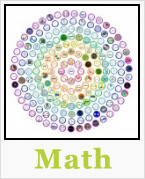



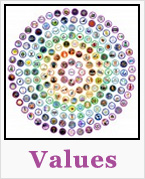
OPEN SOURCE CURRICULUM OUTLINES (click image for summaries and links to complete pages)
CARE
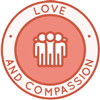
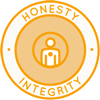
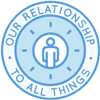
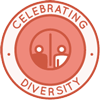
SHARE
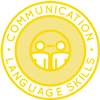
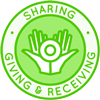
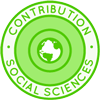
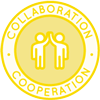
PLAY
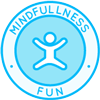
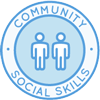
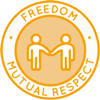
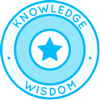
OPEN SOURCE TEACHING METHODOLOGY SUMMARIES
Montessori | Waldorf | Orff | Reggio | Multi-Intelligence | Bloom's Taxonomy | Study Tech | I-WE
INDEX OF ALL THE ONE COMMUNITY OPEN SOURCE LESSON PLANS

Click this image for the Lesson Plans for Life page with links to the rest of the lesson plans
THE WORLD'S LARGEST ONLINE FREE EDUCATION RESOURCE ARCHIVE
RELATED CONTENT AND OTHER RELATED RESOURCES
We're building this resource section. Click here if you have a suggestion or resource for this page.
























 One Community
One Community




